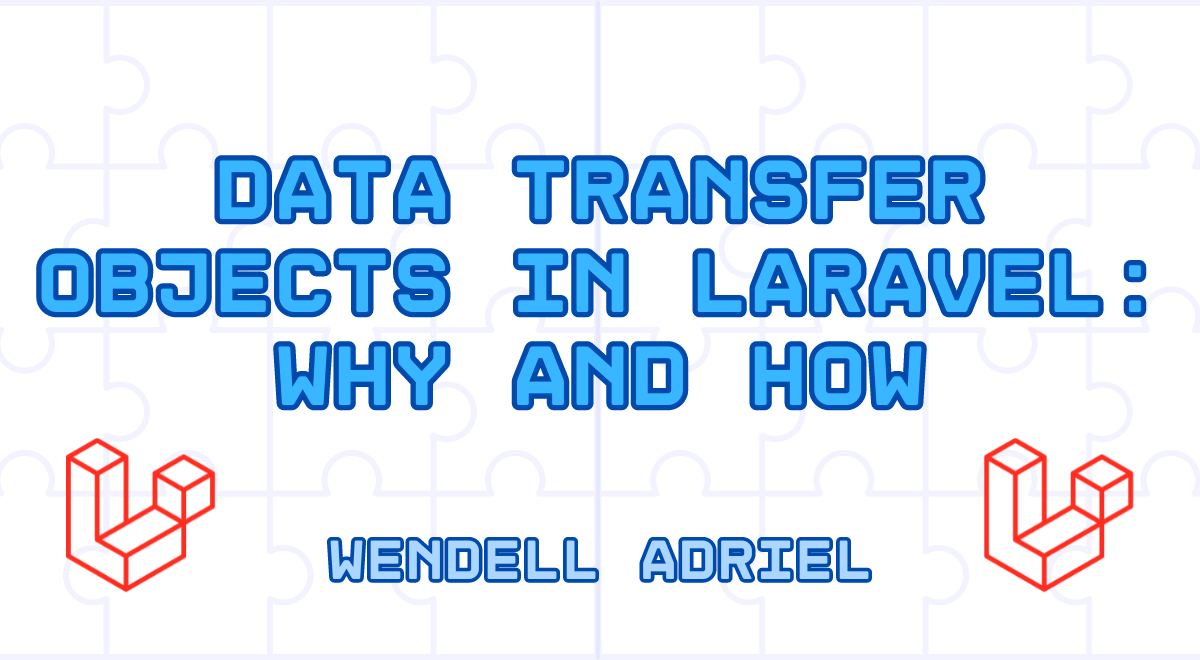Introduction
Data Transfer Object (DTO) is a pattern that if used correctly can improve the quality and the maintainability of applications. In this article, we will learn why you should be using DTOs in your applications and how to do it in Laravel.
What is a Data Transfer Object
A Data Transfer Object (DTO) is a design pattern used to transfer data between software systems or layers in a software architecture. It is a simple object that contains a set of data, typically in the form of properties or fields, that represents a specific entity or concept in the system. The main purpose of a DTO is to decouple the different layers or components of a software system, allowing them to communicate and exchange data without needing to know the details of each other's implementation.
In summary, a DTO is a simple object that is used to transfer data between different layers or components of a software system, helping to decouple and isolate these components from each other.
Why to use DTOs
From small and simple codebases to large and complex ones, there are some standards and patterns we can use to make sure that our applications have a good quality code, it's easy to maintain, adapt and update.
Data structure standards play a huge role in this. If I know the data structure used in a piece of code, it's really easy to maintain that and also easy to change it and that's where the DTOs come into play.
Let's say that I have this code:
class UserController extends Controller
{
public function store(Request $request): JsonResponse
{
return response()->json([
$this->service->createUser($request->all()),
Response::HTTP_CREATED
]);
}
}
Even that's a simple piece of code, if I created it one year ago and now I have to change the createUser
method, I'll probably not remember which data the $request->all() method returns.
I could refactor this to use a Custom Request class:
class UserController extends Controller
{
public function store(CreateUserRequest $request): JsonResponse
{
return response()->json([
$this->service->createUser($request->validated()),
Response::HTTP_CREATED
]);
}
}
With the above code, if I needed to update the createUser method and I don't remember which data it uses,
I could go to the CreateUserRequest to check. But that creates other issues:
-
The validation of the data is now coupled to the HTTP Request. If I need to call the
createUsermethod from within my code, I will need to validate the data manually again. -
You have the data mapped, but since the
$request->validated()returns an array, you can't force the type of data passed to thecreateUsermethod.
If we apply the DTO pattern here we can solve both issues described above. We can map and validate the
data in the DTO instead, so if I need to call the createUser method from within my code, the validation
will be automatically done since I need to pass a DTO to the method, and it will also force the type of
data that we could pass to the createUser method since we will now need to pass a specific DTO for it.
How to use DTOs
As explained above, DTOs can be simple objects to map properties. So the most basic implementation of a DTO would be to create a simple class like this:
class CreateUserDTO
{
public function __construct(
private string $name,
private string $email,
private string $username,
private string $password
) {}
// Add getters, setters, validation
}
Then you can create your DTO from the Request:
class UserController extends Controller
{
public function store(Request $request): JsonResponse
{
return response()->json([
$this->service->createUser(new CreateUserDTO(...$request->all())),
Response::HTTP_CREATED
]);
}
}
Here: new CreateUserDTO(...$request->all()) we are using the named arguments from PHP 8 to create an
instance of the CreateUserDTO.
With this, we solve the issues that we detailed in the last section. Your code now has improved quality and maintainability.
Conclusion
In this article, we learned what are Data Transfer Objects, why we should be using them in our applications and how to use them in Laravel.
If you want to start using DTOs in your applications, I created this package that's an easy way to start using DTOs by providing a base DTO class with validation and type-casting out-of-the-box and also an artisan command for creating your DTOs.
I hope that you liked this article and if you do, don’t forget to share this article with your friends!!! See ya!

